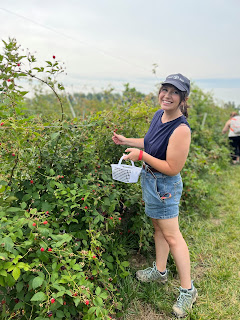Terracotta composting is quite truly what the name implies, creating compost within stacked terracotta pots. These pots have drilled aeration holes, and all but the lowest pot have the bottoms removed, with netting installed to allow for airflow.
This hand-me-down composter came from coworker of mine, and from another coworker before that. It's seen its share of spaces between the three of us; because it's so convenient. The method was created in India, and the principles can apply in this climate.The concept resembles that of more standard compost methods. You put your browns as a base, and layer in your greens. Once your top pot is full, you'll give it a mix to aerate and then move the pot down your tower, placing an empty pot on top. You will continue this process, and in 2-3 months, should have finished compost in your bottom pot. This system works well for me, as my household only consists of two people, and we produce minimal food scraps.
There are some key differences between this method and more typical backyard composting that I should highlight.
Use cocopeat as your brown.
Cocopeat is traditionally used as the brown, or carbon source. It is much finer than autumn leaves or wood chips, and provides better coverage of the greens. You can add leaves to this system, but you'll want to toss in some cocopeat as well to ensure it stays dry. Cocopeat is also inexpensive and easy to come by. If you do not have access or would like an alternative, sawdust shares many of the same properties, so could also be used.The system should be drier.
The terracotta pots are covered, and because they are aerated naturally, your compost will be drier. This is OKAY. As mentioned above, the cocopeat is a really dry material, and it helps to ensure that there are no smells, as this system was ultimately created for small spaces such as porches and patios. The pots also should be kept away from direct rain, unlike most backyard composters.
You may want to add microorganisms.
It's totally optional, but the process may be a little slower if left to it's own devices. The terracotta pots keep the compost from direct contact with the natural organisms in the soil. The food scraps will contain organisms that will eventually be able to break down your compost, it just might take some time. You can buy compost starter that contains microbes from a local home department store or online.
For more information, or for a DIY on how to make your own terracotta pot system, you can visit this Sustainable America blog post. Or, if you want to compare to more typical compost methods, you can visit our blog on How to Build a Layered Compost Pile.
As this is a brand-new system for me, it'll take a while before I have a finished compost product. Rest assured; I'll keep you posted.
Posted by: Sam Plante



.png)






